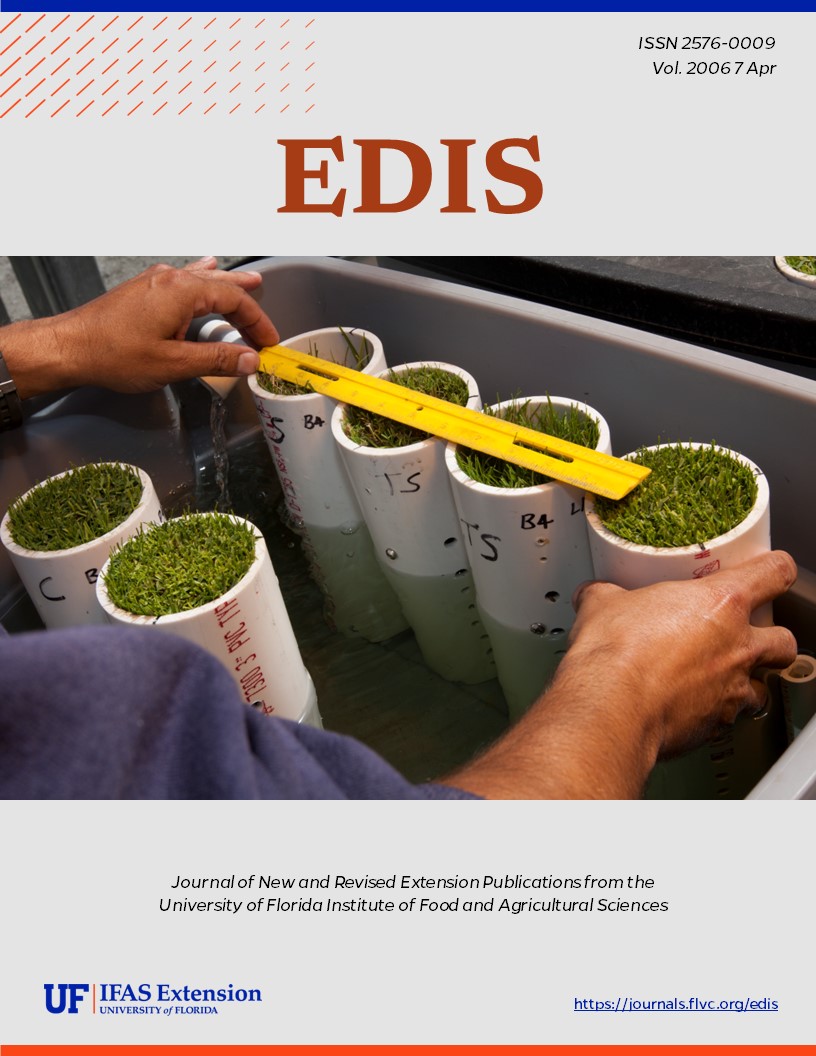Abstract
Citrus is susceptible to a large number of diseases caused by plant pathogens. Economic losses due to plant diseases can be severe, but fortunately, not all pathogens attacking citrus are present in Florida. Major citrus diseases currently present in Florida include: Alternaria brown spot, blight, citrus canker, greasy spot, melanose, Phytophthora-induced diseases (foot and root rot, brown rot), postbloom fruit drop (PFD), scab, and tristeza. An exotic, destructive disease called citrus greening (Huanglongbing) has recently been found in Florida. Any exotic diseases, if introduced, will increase production costs and decrease profitability for Florida growers. Exotic diseases affect the viability of the industry or the varieties that could be profitably grown. Background information for each exotic citrus disease will be presented in a series of fact sheets to: 1) provide a basis for evaluating exotic pathogens that may pose potential risks to Florida citrus; and 2) create a decision-making framework to prevent their introduction and spread. This paper will discuss Citrus tristeza virus-Stem Pitting (CTV-SP) disease.
This article is written based on the materials used for the Workshops of the Exotic Citrus Pathogen Threat Project led by Drs. S. M. Garnsey and H. W. Browning, and approved for publication.
This document is Fact Sheet PP-227, one of a series of the Plant Pathology Department, UF/IFAS Extension. Original publication date: March 2006.
References
Bar-Joseph, M., R. Marcus, and R. F. Lee. 1989. The continuous challenge of citrus tristeza virus control. Annual Review of Phytopathology 27: 291-316. https://doi.org/10.1146/annurev.py.27.090189.001451
Garnsey, S. M., T. R. Gottwald, and R. K. Yokomi. 1998. Control strategies for citrus tristeza virus. In: A. Hadidi, R. Khetarpal, and H. Kozanezawa (eds.) Plant Virus Disease Control. APS. St. Paul, pp. 639-658.
Karasev, A. V., V. P. Boyko, S. Gowda, O. V. Nikolaeva, M. E. Hilf, E. V. Koonin, C. L. Niblett, K. Cline, D. J. Gumpf, R. F. Lee, S. M. Garnsey, D. J. Lewandowski, and W. O. Dawson. 1995. Complete sequence of the citrus tristeza virus RNA genome. Virology 208: 511-520. https://doi.org/10.1006/viro.1995.1182
Rocha-Peña, M. A., R. F. Lee, R. Lastra, C. L. Niblett, F. M. Ochoa-Corona, S. M. Garnsey, R. K. Yokomi. 1995. Citrus tristeza virus and its aphid vector Toxoptera citricida. Plant Disease 79: 437-445. https://doi.org/10.1094/PD-79-0437
Roistacher, C. N., and P. Moreno. 1991. The worldwide threat from destructive isolates of citrus tristeza virus - A review. In: R. H. Brlansky, R. F. Lee, and L. W. Timmer, (eds.) Proceedings of the 11th Conference International Organization of Citrus Virology, Riverside, CA, pp. 7-19. https://doi.org/10.5070/C568S8K9TX

